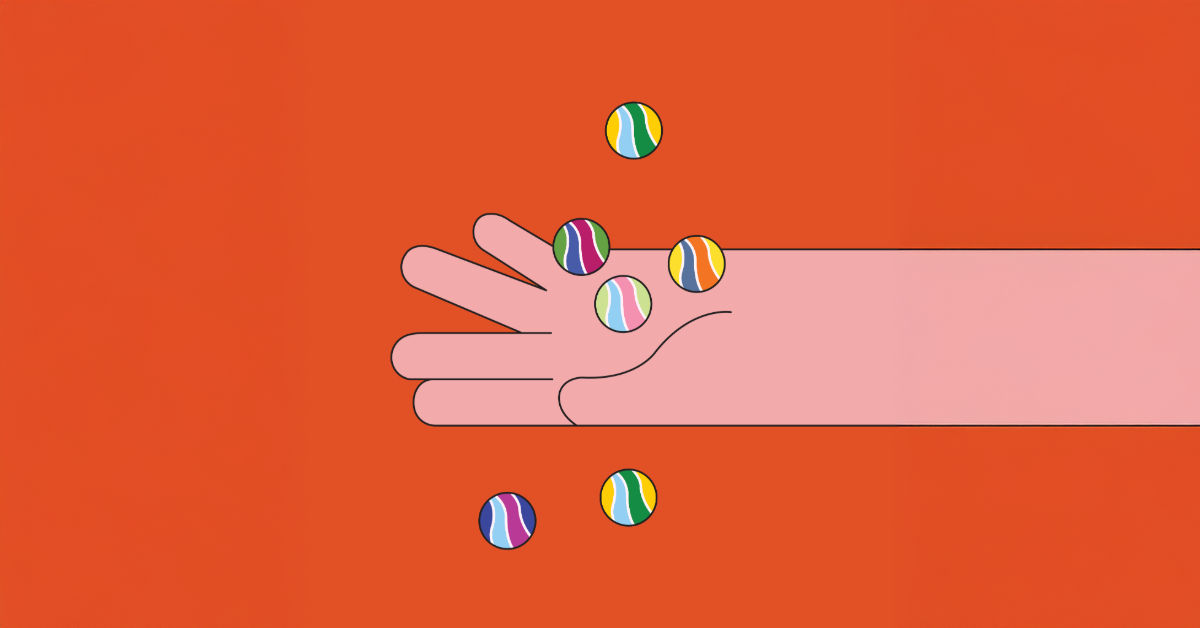Designing for Trust, Not Just Transactions
How Designers Can Build Confidence in an AI-Driven Retail World
Let’s be honest: most people don’t shop in neat, linear journeys anymore. They make decisions in motion: scrolling while cooking dinner, scanning barcodes in a store aisle, or checking curbside pickup availability during a break at work. These aren't isolated events; they're overlapping, context-rich moments that define how people navigate their daily lives.
Today’s commerce isn’t just about conversion. It’s about confidence. Confidence that what you’re seeing is accurate. Confidence that recommendations are honest. Confidence that help is there when you need it, whether it comes from an AI assistant or a real person.
As designers, our job isn’t to chase technology for its own sake. It’s to build systems that help people feel informed, supported, in control, and ultimately, to make everyday life a little easier. That’s what earns trust. And in a world where AI is shaping more and more of the customer journey, trust is the differentiator.
People Still Trust People
AI is getting better at surfacing information quickly. It can pull reviews, match patterns, remember preferences, and predict needs. That’s useful. But in the most personal moments, when someone is deciding between two products that look identical on the surface, they often want something deeper than convenience. They want a recommendation they can believe in.
In a store, that kind of trust comes from the clerk who’s helped hundreds of people just like you. They’ve seen what works, what gets returned, and what people actually enjoy using. They speak from experience, not just data. And yet, much of that frontline wisdom still hasn’t made its way into the digital shelf. That’s the opportunity.
AI and Human Expertise, Working Together
Imagine a hybrid experience where AI helps narrow the field: summarizing reviews, filtering by preferences, surfacing relevant suggestions. But when the decision matters, the customer can connect to a human who knows the products inside and out.
A young parent comparing strollers could get AI-driven specs and availability, then chat with a store associate who’s assembled those models countless times. Someone shopping for jeans could get fit recommendations based on purchase history, but still want a stylist’s input on what works for a job interview. These aren’t edge cases. They’re real-world moments where trust is built through design that connects people to both intelligence and empathy.
Serving Daily Life, Not Just Transactions
In categories like groceries, baby care, and household goods, shopping isn’t just transactional, it’s emotional, habitual, and often tied to the rhythms of everyday life.
When we get these experiences right, we’re not just helping people find what they need. We’re reducing stress, removing friction, and making space for loyalty to grow. Customers remember when they feel taken care of. Whether that comes from a timely AI nudge or a warm recommendation from a human expert, what matters is that the experience feels real and reliable.
Continuity Builds Confidence
The truth is, people don’t see “channels.” They don’t differentiate between online and in-store, or mobile and desktop. They expect continuity. They expect you to remember what they saved on Monday when they walk into the store on Friday. They expect to return a product with the same ease they ordered it. And they absolutely notice when the handoff between systems breaks down.
That’s why omnichannel design isn’t just about syncing systems. It’s about understanding people. It means anticipating when and how they’ll move between digital and physical environments and designing experiences that don’t make them start over each time. If AI is going to help stitch these journeys together, it needs to be trained not just on data but on context. That’s where design plays a critical role.
Let AI Be Quietly Brilliant
While AI has incredible power to automate and personalize, the best examples of it in commerce aren’t the flashiest. Often, they’re the quietest.
A reminder that your usual brand of cereal is on sale. A notification that your curbside pickup is ready a few minutes early. A gentle nudge that the item you liked last week is now available at your local store.
These are simple moments, but they communicate something profound: we see you. We’re here to help. You can count on us.
The Designer’s Role Has Never Been More Important
None of this works without design. The invisible magic of a seamless, trustworthy retail experience is the result of hard decisions, clear principles, and obsessive attention to detail, especially from design teams.
It’s our job to map the messy, non-linear paths customers actually take, and to translate AI’s capabilities into experiences that feel human, not robotic. It’s on us to make sure product recommendations are clear without being pushy, that interfaces are helpful without being overwhelming, and that customers always feel like they’re in control.
Just as importantly, we need to empower the people who serve customers in physical spaces—store associates, stylists, clerks—with the same level of insight and support that AI can offer online. These aren’t opposing forces. They’re complementary strengths. AI can give our teams superpowers. Design can make those powers usable, ethical, and real.
Designers are the connective tissue in this transformation. We speak the language of engineering, product, marketing, and business. But our loyalty lies with the customer. We’re the ones asking, “Is this helpful?” “Is this clear?” “Is this honest?” And in a world full of AI-driven noise, those questions matter more than ever.
Design to Make Life Better
Because in the end, the designer’s job isn’t just to optimize for clicks or metrics. It’s to make people’s lives better. Sometimes that means helping a busy parent get through the grocery run five minutes faster. Sometimes it’s about making someone feel more confident in a purchase, or making a retail worker’s shift a little smoother. These may seem like small things, but they add up. When we stay close to the customer and design with empathy, we earn something that no algorithm can generate: trust.
And the best retail experiences don’t need to shout. They quietly support real people in real moments, earning trust one thoughtful interaction at a time.
"If you don’t listen to your customers, someone else will." - Sam Walton

